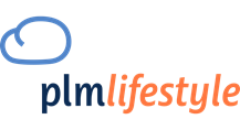Treffina Bath and Beauty Concepts live with WFX PLM in combination with ERP of Kerridge (formerly Unit4 Wholesale)
The design team of Treffina from Eindhoven develops Bath and Beauty Concepts for various chain stores in the Netherlands and abroad. In addition to our own collection, there are specials that are developed in collaboration with the customer. As a result, there is a multitude of development processes in which many links are involved under great time pressure, including suppliers, designers, purchasing, sales, quality control and the customer. It is important that the various departments have a good and quick insight and overview of the activities and results of the links in question. When working with many different data collections such as different spreadsheets and files on shares, this is not possible.


Advantages PLM Platform
With the implementation of Cloud PLM , all collection data, the current and previous collections and customer-specific requests, are now housed in one platform that is accessible to all involved. Suppliers can log in and see the latest version of a design here. This means that there is no longer any confusion about the correct version, such as when sending e-mails and Excel sheets. Requests for customer specials are processed directly in the system and provided with a workflow. This workflow guides purchase quotes, sampling and inspections and now gives all those involved internal and external insight and overview into the progress of the product development process, a shorter time-to-market, a reduced chance of errors and increased efficiency.

Shipments
Cloud PLM also provides insight into the flow of purchase orders and container shipments. Controlled from the workflow, the supplier logs in and processes the details of the shipment and the composition of the container. As a result, it is no longer necessary for Treffina employees to monitor all requests and purchase orders, this is only necessary when a delay occurs as visible in the dashboard.
Integration with ERP
The articles and purchase orders are eventually read into the ERP system. An advantage here is also that the articles are then already provided with, for example, logistical data, such as for example barcodes, dimensions, warehouse locations and cost components. As a result, there is no delay because this data still has to be created in the ERP system.

